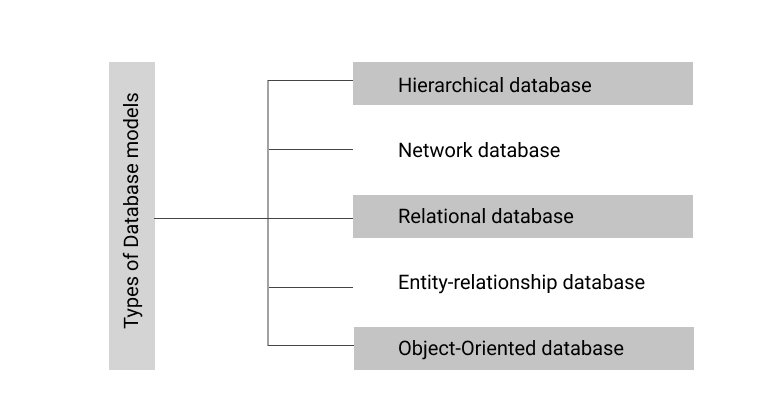Table of Contents
In this article, you’ll learn about Database Models in DBMS like Hierarchical database, Network database, Relational database and more.
What is Database Models
A Database model defines the logical design and structure of a database and defines how data will be stored, accessed, and updated in a database management system.

Types of Database models
- Hierarchical database
- Network database
- Relational database
- Entity-relationship database
- Object-Oriented database
Hierarchical Model
A Hierarchical database arranges data in a tree-like structure, with a clear hierarchy. The data can be stored in a top-down or bottom-up format. It uses a parent-child relationship to represent the data, where each data item has a link to its parent item. In Hierarchical DBMS, parents can have multiple children, while each child can have only one parent.
Advantages/Disadvantages of the Hierarchical Model
Here are a few points to mark the advantages and disadvantages of the Hierarchical database model:
- Because it has one-to-many relationships between different types of data so it is easier and fast to fetch the data.
- But the Hierarchical model is less flexible.
- And it doesn’t support many-to-many relationships.
Network Model
The network database model allows for a child to have multiple parents, making it suitable for representing complex relationships like many-to-many connections, such as orders and parts. Entities are organized in a graph, accessible through various paths.
Advantages of the Network Model
- It supports complex relationships
- It allows more flexibility
Relational Model
The relational DBMS is the most widely used model due to its simplicity. It normalizes data into rows and columns within tables. Data is stored in fixed structures and manipulated using SQL.
Advantages of the Relational Model
- It’s simple and easy to implement.
- Poplar database software is available for this database model.
- It supports SQL using which you can easily query the data.
Entity-Relationship Model
The Entity-Relationship (ER) Model is based on real-world entities and their relationships. It represents connections by dividing objects of interest into entities and their characteristics into attributes.
Advantages of the ER Model
- It is easy to understand and design.
- Using the ER model we can represent data structures easily.
- As the ER model cannot be directly implemented into a database model, it is just a step toward designing the relational database model.
Object-Oriented Model
In the Object-Oriented Model, data is stored as objects with defined classes that contain data values and associated operations. It views the database as a collection of objects.
Advantages of the Object-oriented Model
- It can easily support complex data structures, with relationships.
- It also supports features like Inheritance, Encapsulation, etc.
1 comment
Greetings! Very helpful advice in this particular post!
It is the little changes that make the most significant changes.
Thanks for sharing!
Comments are closed.